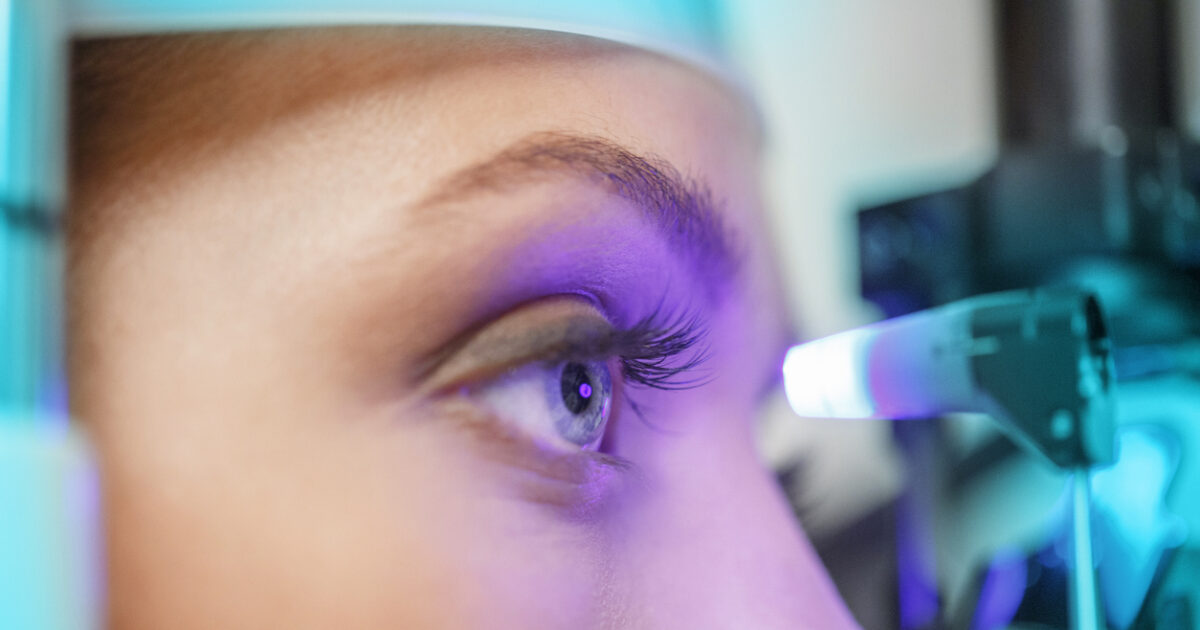OR myopia It is not the only problem of vision that can be corrected with laser refractive surgery.
Developments of refractive surgery have been rapid and today they can be treated with great precision, in addition to myopia, both hypermetropia and astigmatism and presbyopia, provided that the candidates meet some. conditions.
“The laser refractive interventions applied today are the Smile Pro, Lasik and PRK methods. An experienced ophthalmologist, during preoperative examination, will decide what is the appropriate method for anyone interested, after taking his medical history and clinical examination of his eyes. All three methods have permanent results and fully contribute to the restoration of vision, “Dr. Konstantinos X. Karabatsas, Ophthalmologist Surgeon, Deputy Professor of Ophthalmology University of West Attica, Doctor and Lecturer at the University of Bristol University School of Medicine in the United Kingdom.
There is no better or worse between these methods, it continues. They are all safe when the approved medical protocols are observed, leading to the same excellent results. The decision on which method will be followed depends on the morphology of the eye and a number of other factors evaluated by the ophthalmologist.
The SMILEPRO method for example is particularly indicated for patients with Dry eye. Lasik is appropriate for high degrees of myopiaand for patients with hypermetropia and astigmatism. PRK is more suitable for small degrees of myopia and for patients with slim.
“Although preoperatively discusses a detailed discussion between the person concerned and the doctor about the procedure that suits him best, the final decision is based on his eye exams. The candidate must gather specific indications for each type of intervention and, if he chooses to undergo laser correction, he will be informed of the expected result and possible complications, “the expert said.
In order to be a suitable candidate for laser refractive surgery, as mentioned above, he must meet certain conditions. These are summary:
- To have over 18 years of age
- Not to suffer from another ophthalmological or systematic condition that makes prohibitive intervention
- Not to have an active infection in the eyes
- If she is a woman not to be in a pregnancy or pregnancy period
- The degrees of the refractive problem of his vision are stable for at least one year. Myopia is also stabilized when no more than half a degree changed in the last two years before examination
- The degrees of the refractive problem of his vision are within the appropriate range of treatment. Depending on the anatomical data of each case, candidates for this surgery are usually people with myopia up to about 10 degrees, with up to 6 degrees, with up to 6 degrees
- To meet his eyes the anatomical conditions of laser surgery. These are identified with special exams made preoperatively and confirm that the thickness of the cornea
On the contrary, laser refractive surgery in the cornea, those with a very large refractive error (exceeding the degrees mentioned above) or very thin cornea or particularly old daughters, may not undergo refractive laser surgery.
“The laser works by removing tissue and making the cornea of the eye more flat. If you are myophas, the more myopia you have, the more corneal tissue has to be removed. In cases where the grades of myopia exceed 10, the Intervention is not indicated. This is because the remaining tissue may not have the appropriate thickness to maintain its rigidity and cause the so -called corneal stretching. In addition, the predictability of the correction is reduced above about 8-10 degrees of myopia, ”explains Karabatsas.
Correspondingly, inappropriate candidates for laser refractive surgery are those who have very high hypermetropia (over 6 degrees) because the predictability of correction in these degrees is moderate. In practice, this means that there is an increased risk of being subdued, hyperborn or even post -operative corneal abnormalities.
In terms of eye daughterit is measured by a special examination (called cormorant) during preoperative assessment. Since the laser is applied to a certain area of the cornea, if a patient has very old daughters, after the surgery may have severe dims in dim lighting. He can also see “halo” around the lights. This, at best, can make the night driving difficult and at worst, impossible.
“Laser can correct most candidates with refractive problems, providing excellent results. The remaining percentage excludes cases of high myopia-hypertrophy-hypertrophy or myopia with problems with their cornea (eg fine thickness of cornea).
If one is not appropriate for a laser correction, alternatives may be suggested. Potential options that also give very good results include lenses (CLE, RLE). In a complete surgical ophthalmology center, these alternative ways of correction are also provided to safely and accurately correct any recipe for myopia, hypermetropia and astigmatism, however high it is, ”the professor concludes.
